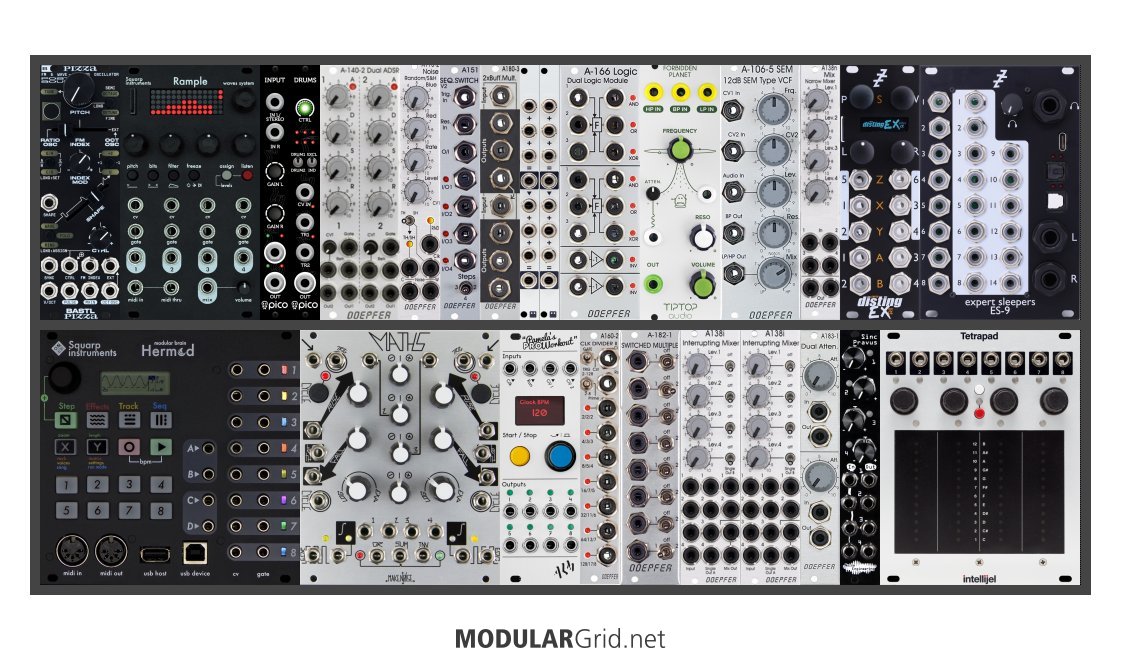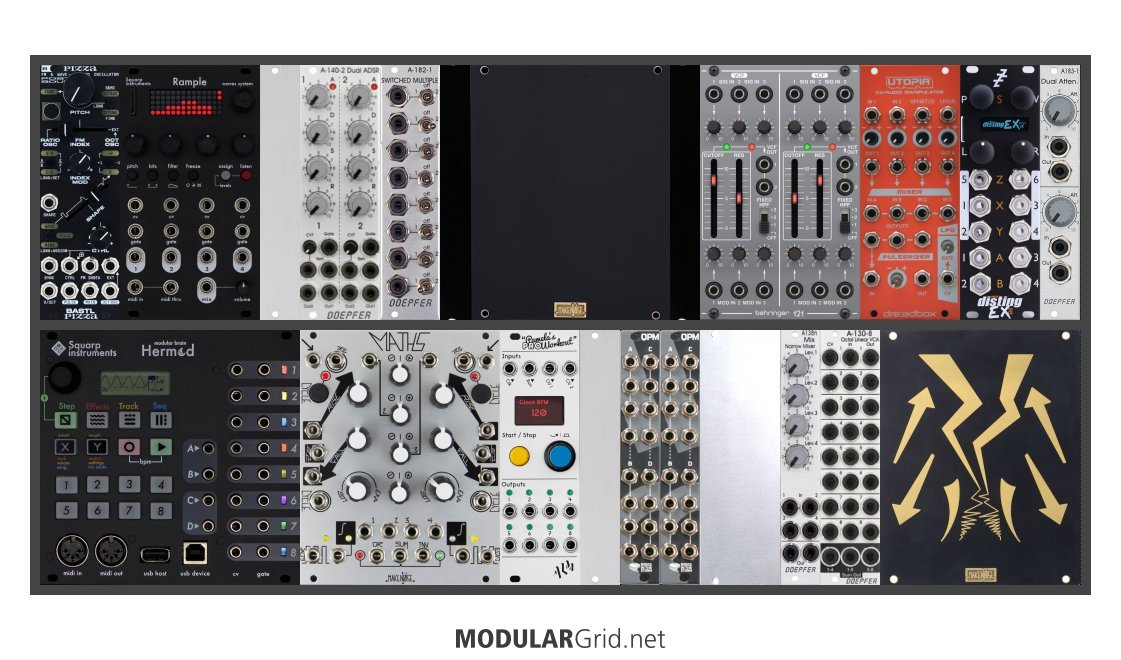Working towards my first modular setup. Comments and critique welcome and encouraged!
I have a Moog Mavis that will start out in an 84HP by 3U by 55mm case: Cre8Audio NiftyCase, that includes power (1500mA @ +12v, 500mA @ -12v, and 500mA @ +5v), midi to CV, and mono out. The Mavis will eventually be removed to make space as modules are acquired. The Mavis will provide some traditional synth elements to the system (VCO, VCF, LFO, EG, S+H, etc.), so the main goal for the rest of the system in to compliment the Mavis.
For example, the Mavis' internal sample + hold source is the VCO, which makes for nice rhythmic patterns, but isn't as random-ish as using a noise source. Adding a module that can provide noise thus increases the possibilities of the S+H, while also providing noise for any other possible use case. The Kinks module has a dedicated noise output, normalled to it's own S+H circuit, along with a few other useful utilities, all in a nice 4HP size.
In the spirit of complimenting a traditional synth voice setup, I want non-traditional elements at the center of the system. Another major goal of this setup is to achieve lots of functionality in a small/portable setup. I'm currently leaning towards Mutable Instruments modules, but many of them are quite large for such a limited space. There are many clones that come in smaller sizes, so I have included them. Some, however, are still quite large. Ripples, for example, is basically just a filter, but takes up 8HP of width. I'd love to hear of any alternatives in a smaller format (doesn't have to be Mutable/clone, any nice filter under 8HP).
At 8HP each, Pam's and Disting EX were included to add lots of diverse functionality in a small space. Continuing the trend of more functionality in less space, Ochd fits many spread-out LFOs into 4HP. The remaining space was filled with a handful of 2HP modules. I'm still learning about all of the functionality of Pam's and Disting EX, and they might be able to cover many functions that I might be attempting to get out of other modules, so let me know if anything seems obvious.
Let me know what you think! Is this reasonable? Am I making rookie mistakes? Too many LFOs? Not enough VCAs? Too Mutable? Needs Beads? Brand X makes poor modules? Redundant modules? Obvious components missing? Money could be spent better elsewhere? Facts, anecdotes, opinions, information, etc. all welcome.



